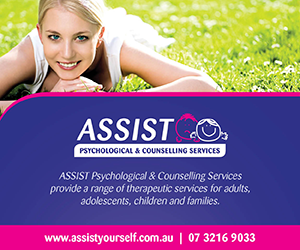Positive reform that really benefits people who live with mental illness is everybody’s business. And people – their choices, their needs, their hopes, their lives – not simply processes should be at the heart that reform.
This is the clarion call of The NSW Mental Health Commission’s Living Well: Putting people at the centre of mental health reform in NSW: A Report, recently tabled in the NSW Parliament.
The Report is a companion document to Living Well: A Strategic Plan for Mental Health NSW: 2014 – 2024, which is being considered by the Government and which sets an ambitious agenda for change.
“We listened to those people with first-hand knowledge and experience – those living with mental illness, their families and carers, and those working in the mental health system – to truly understand how our system responds now and to develop ideas for how we could improve it,” says Commissioner John Feneley.
The Report discusses broad directions for much-needed reform such as shifting the focus from hospital-based care to in-community supports.
“We know that people actually do better if they are properly supported and receive care to live on their own terms in their community. Hospital cannot be our first line of defence or our long-term solution to caring for people living with mental illness,” Commissioner Feneley says.
The Report also talks about the importance of promoting community-wide mental health and wellbeing so that mental illness can be prevented. “If the whole community is resilient, it helps individuals to be resilient,” he says.
The Report particularly stresses the need for early intervention, not only to prevent mental illness but to help people before they become seriously ill.
“Early intervention is not just about children, it is about getting in early with the right supports for people who need it whatever age they are,” Commissioner Feneley says.
The Report is fundamentally about people. “It is about people who live with mental illness and pursue their recovery through work, art orconnections to their communities and those whoare striving to change our systems of mental healthsupport, so that they respond better to people in distress.”
The voices heard during the wide-ranging consultation that took place across the state are reflected in every word on the page.
The story of the consultation process is also told. The more than 2,100 people consultedincluded Aboriginal people – for whom healing through culture is deeply resonant, people who live in metropolitan and rural and regional areas, children and adults, andpeople from diverse cultures and other groups such as lesbian, gay, bisexual, transgender and intersex people.
“The Report is testimony to the extraordinary resourcefulness and resilience of the human spirit, and to the strength and generosity of families and communities,” Commissioner Feneley says.
Some people speak personally, while the experiences, needs, hopes and wants of others are reflected more broadly in the Report, including through eight ‘Journeys’ that cover all stages of life, from the earliest years to older age: Building Community Resilience and Wellbeing; The Best Start; Troubled Kids; Healthy Transitions; Towards a Better Life; Breaking the Cycle; Body and Soul; Living Long and Strong.
The real-life stories tell of people living with mental illness whose experiences of the mental health system has been less than ideal, such as artist Anthony Mannix, who spent many years in psychiatric hospitals including the former Gladesville Hospital, home to the Commission’s offices.
And Maia, whose experience of mental illness is compounded by an intellectual disability. There is also Jason, whose life was turned around by his involvement in the Gamarada Aboriginal cultural healing program.
There are stories of those people working for change from within the system and in the community, such as Shiree Talbot, who co-ordinates the Beyond Barbed Wire mentoring program for women returning to their families after being in prison.
And Margaret Mulcahy, executive principal at Coonamble High School, who recognises that the best way to tackle the mental health issues facing the town is to promote resilience and mental health and wellbeing for her students at school.
There is the story from Charles Thompson, director of Central Coast Mental Health and Ben Roberts, nurse unit manager for emergency department mental health teams, who believe that even people in the grip of an acute crisis can be treated in the community without needing to come to a hospital emergency department.
What people told the Commission has been articulated into broad directions for reform in the Report and into more specific future directions and actions in the draft Strategic Plan.
While the Commission exists to promote change, and to guide and monitor it, it cannot make change happen. That decision now rests with the Government and its consideration of the draft Strategic Plan.
Mr. John Feneley
NSW Mental Health Commissioner






















